Écrit par Bram de Vrind, @defietsjournalist
Avec un parcours passant par le Col de la Croix-de-Fer (2068 m) et le Col du Glandon (1924 m), le GFNY Alpes Vaujany apporte aux cyclistes la sensation d’être un pro d’un jour dans les Alpes françaises. J’ai vécu une journée épique au Gran Fondo, qui a été dominée par des conditions climatiques difficiles.
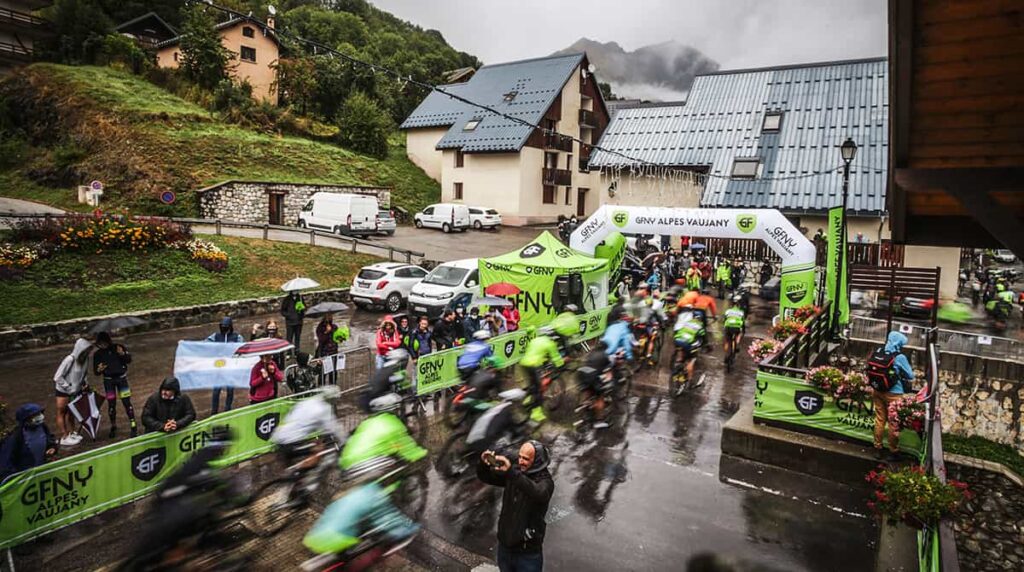
Les motos d’escorte s’alignent devant le peloton. L’arche de départ verte et des ponchos pour coureurs donnent de la couleur sur la place grise du village de Vaujany. En arrière-plan, la cascade de la Fare rugit à 200 mètres de hauteur. Une musique excitante résonne. “Allons-y, vous êtes en feu”, crie l’orateur avec un fort accent français.
GFNY Alpes Vaujany
Nous sommes le 30 août. La pluie tombe du ciel alors que je suis avec 150 autres coureurs dans les SAS de départ du GFNY Alpes Vaujany. C’est mon premier gran fondo de l’année : J’ai hâte de pouvoir enfin courir à nouveau ! Cependant, l’organisation et les participants ont probablement imaginé la première édition de cet événement différemment. Au programme, un parcours de 118 kilomètres pour se régaler : avec les géants alpins que sont le Col de la Croix-de-Fer (25 km/5%) et le Col du Glandon (20 km/7,2%), suivi de l’inconnue mais difficile montée pour le final à Vaujany (4,6 km/8,6%).
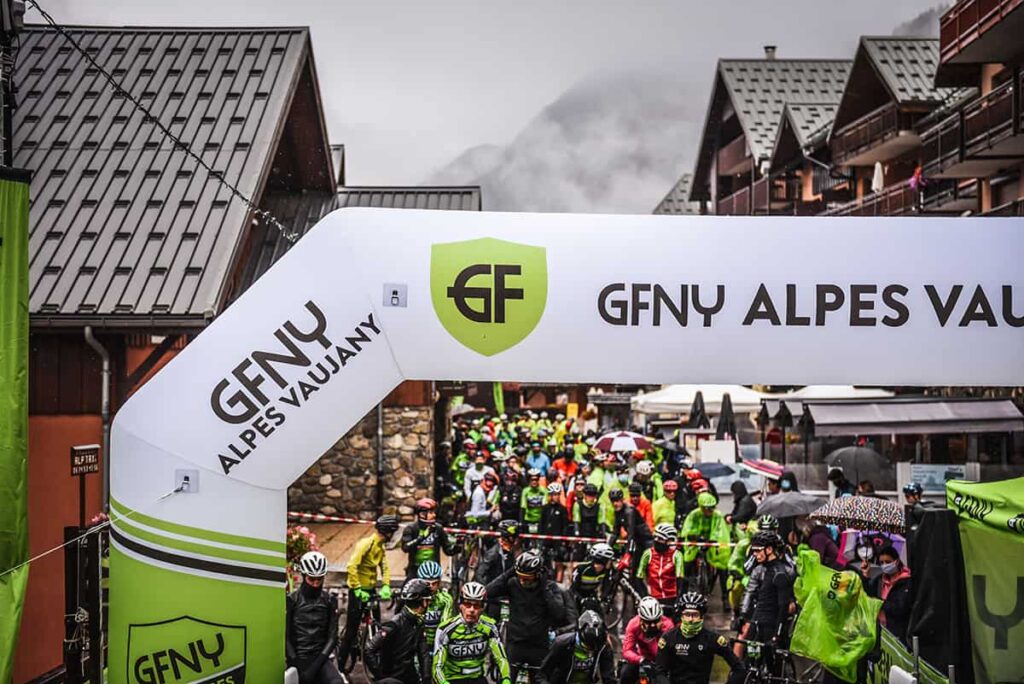
Le temps avait été ensoleillé ces dernières semaines mais a changé pendant le week-end de course. Il a plu presque continuellement ces derniers jours et les températures n’ont pas dépassé 14 degrés dans la vallée. Résultat : de la neige au sommet des montagnes et du gravier emporté sur les routes de montagne. Sur les 400 coureurs inscrits, beaucoup n’ont pas pu se rendre à la course en raison des restrictions de voyage de Covid.
Parcours raccourci
Hier est arrivé le message inévitable : le parcours sera raccourci à 60 kilomètres. Nous ne ferons que monter à la Croix-de-Fer, puis nous redescendrons par le même chemin dans la vallée pour remonter à Vaujany. La descente de la Croix-de-Fer au pied du Glandon est trop dangereuse en raison d’un glissement de terrain, selon le fondateur du GFNY, Uli Fluhme : “Nous voulons garder les participants sur un côté de la montagne pour des raisons de sécurité. C’est une déception pour les participants, mais surtout pour l’organisation qui a fait un effort supplémentaire pour rendre l’événement résistant à la corona. “Mais oui, nous ne pouvons maîtriser les montagnes imprévisibles”, soupire Uli.
Série mondiale du GFNY
Le GFNY Alpes Vaujany est le 22e événement du calendrier des GFNY World Series. uiiioCyclistes fanatiques, Uli et sa femme Lidia Fluhme ont fondé le GFNY (Gran Fondo New York) il y a dix ans pour apporter un granfondo dans leur ville natale. Depuis 2011, l’événement se déroule sur un circuit fermé de 160 kilomètres, de Big Apple à Bear Mountain et retour. C’est un succès : avec quelque 5000 participants par an, il est devenu le plus grand granfondo des Amériques.
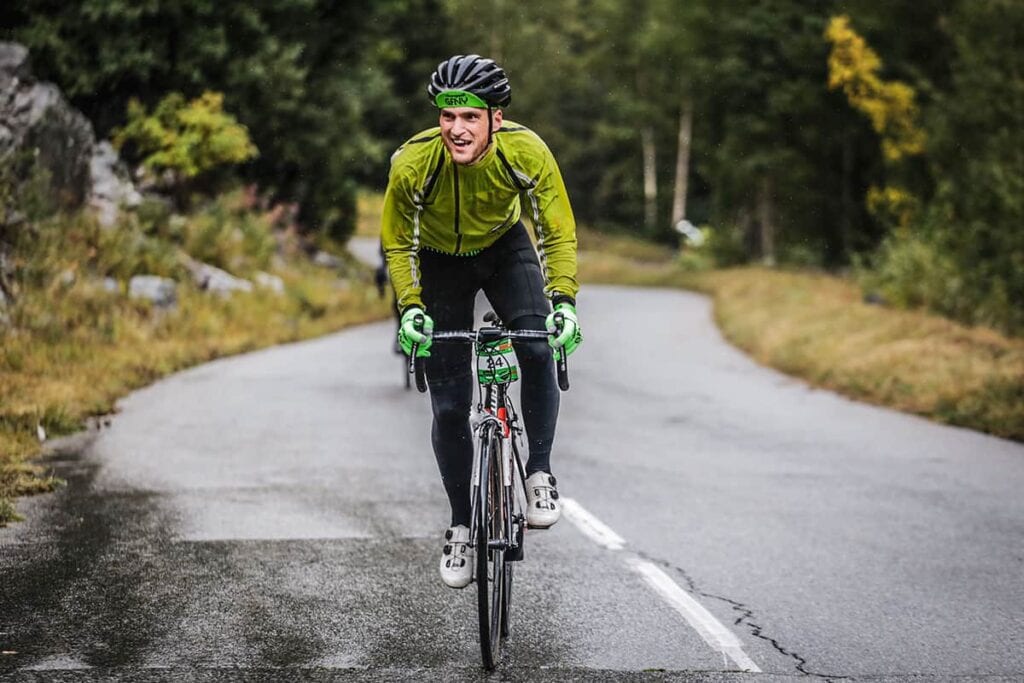
Be a pro for a day
Le GFNY a établi un calendrier international avec des World Series depuis 2014. Le slogan de ces événements est ” BE A PRO FOR A DAY”. Toutes les courses du GFNY ont un départ en groupe, un chronométrage sur puce du début à la fin, des classements, des prix et podium par catégorie. La circulation est réglementée et l’organisation distribue des bouteilles d’eau pour que les participants les plus rapides n’aient pas à s’arrêter. Les participants sont aussi bien des professionnels qui vivent pour la course que des cyclistes amateurs qui se joignent à la course pour la camaraderie et le défi de parcourir un parcours difficile. Tous les participants reçoivent un maillot de course pour souligner leur égalité et leur amour commun pour la course. Avec un droit d’inscription de 52 euros (Pour une inscription au plus tôt), le GFNY Vaujany se situe dans la moyenne malgré le haut niveau de service.
En tant que cyclo fanatique, il n’y a rien que j’aime plus que de rouler en compétition sur les plus beaux parcours. J’ai de bons souvenirs du GFNY. En 2017, j’ai participé au GFNY NYC. Le départ avec 5000 participants sur le pont George Washington, fermé à la circulation, dans Big Apple était magique. Cette année-là, pour la première fois, je m’étais entraîné spécifiquement pour un événement qui a porté ses fruits avec une fière 28e place au classement général. Un an plus tard, à ma propre surprise, j’étais dans le groupe de tête du GFNY Deutschland. La 8e place obtenue lors de cet événement est un autre point fort personnel.
Allez !!!
Les ponchos se détachent, l’annonceur fait un compte à rebours jusqu’à zéro : c’est parti ! La descente de Vaujany est neutralisée, nous parcourons les cinq premiers kilomètres derrière la voiture du directeur de course. Cela entraîne des querelles : de nombreux coureurs veulent s’élancer en tête de la montée de la Croix-de-Fer.
“Allez !” Au pied du col, le directeur de course Cédric Haas soulève la neutralisation de la lucarne de la voiture. En raison d’une grave blessure, un classement de haut niveau n’est pas en place pour moi aujourd’hui. Le peloton se déplace et je sens immédiatement que je ne peux pas suivre les plus rapides.
Le peloton serpente dans la montagne comme un ruban allongé. À partir de là, c’est chacun pour soi. 25 longs kilomètres pour atteindre la croix de fer à 2067 mètres d’altitude d’où le col tire son nom. Un coureur dans un poncho battant du GFNY passe par là. La pluie éclabousse l’asphalte et crée des courants d’eau sur la route. Les sommets environnants sont poudrés de neige. J’essaie de me mettre à mon rythme et de gaspiller le moins d’énergie possible.
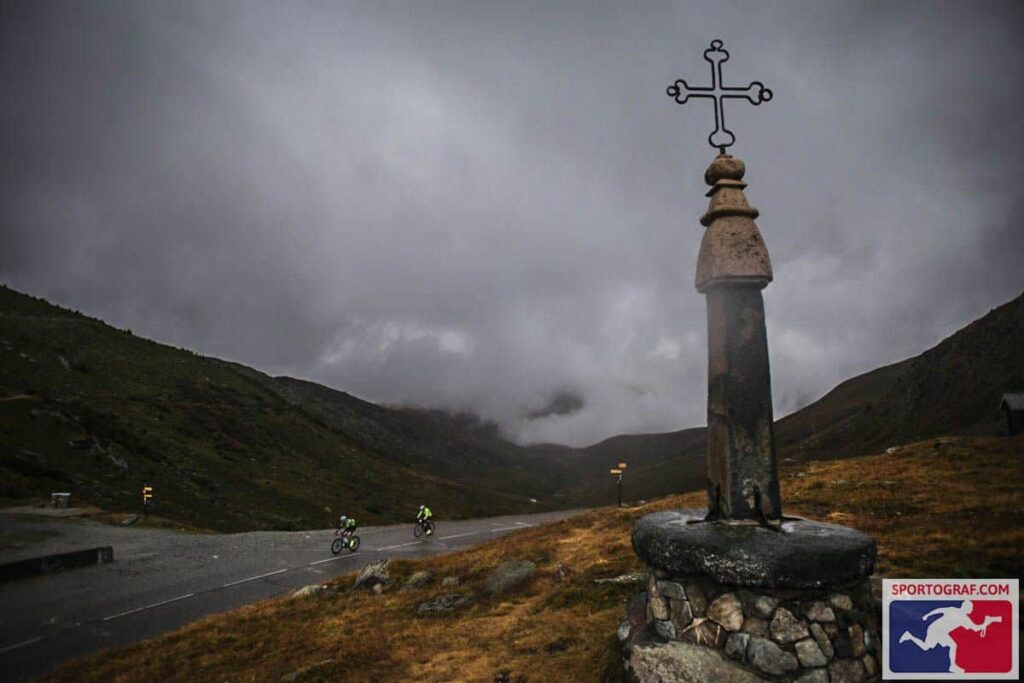
De bonnes jambes
Mon rythme cardiaque est assez élevé, mais je décide de continuer à pousser parce que nous ne devons “que” courir pendant 2,5 à 3 heures. Quand la montée s’aplatit dans le village du fleuve d’Allemont, je me fais petit pour être en position de “contre-la-montre”. Lors d’une courte descente, je dépasse à nouveau le gars au poncho à claquettes. Celui qui n’est pas fort doit être intelligent.
A 15 kilomètres avant le sommet, je ralentis un peu. Mon cœur est au seuil depuis plus d’une demi-heure et je veux éviter de tomber à court dans la montée finale. Je roule avec mon collègue allemand Sebastian, journaliste au magazine Roadbike. Il conduit un Specialized noir avec des autocollants verts et du ruban adhésif pour guidon dont la couleur correspond parfaitement au maillot vert du GFNY. Il pourrait remporter le prix de beauté du plus beau pilote aujourd’hui.
Une deuxième phase de plat suit avec une vue sur le Lac de Grand’Maison bleu opale. Au loin, on peut voir la route qui serpente sans fin jusqu’au sommet qui est caché dans les nuages. J’ai de bonnes jambes.
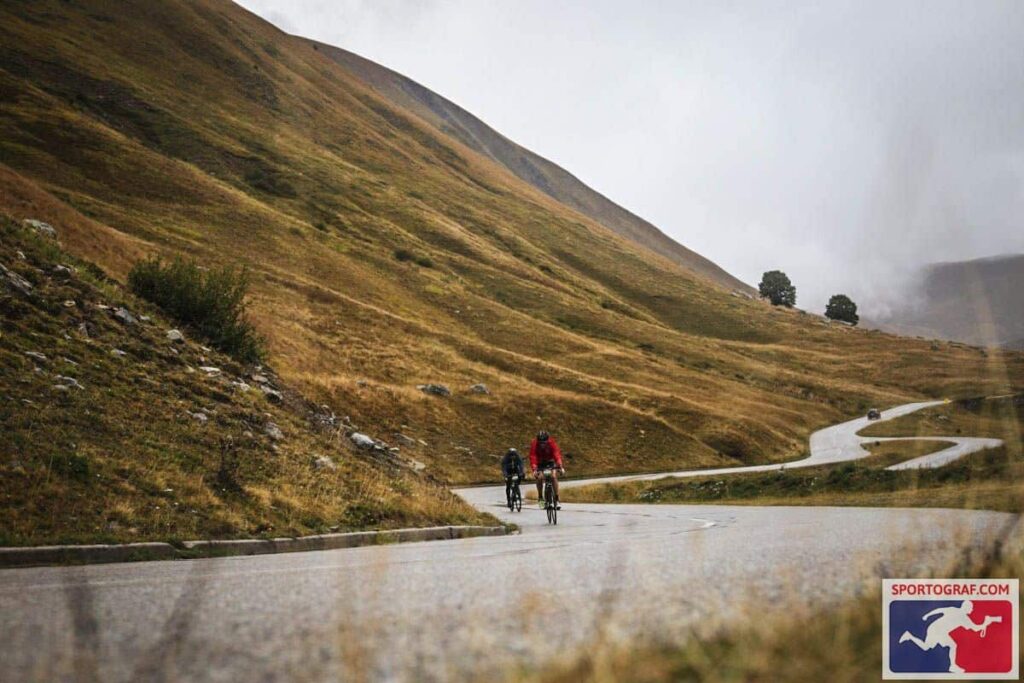
Histoire du cyclisme
Cinq kilomètres avant le sommet, nous nous retrouvons dans un paysage sauvage avec des rochers et des prairies. Je commence à sentir l’air raréfié. BARDET” “BARDET” est peint avec des lettres majuscules sur la chaussée comme encouragement pour le public français.
L’histoire du cyclisme est écrite sur ce col. Depuis 1947, la Croix-de-Fer a été incluse dix-huit fois dans le Tour de France. Lors du dernier passage en 2018, Steven Kruijswijk a joué un rôle de premier plan. Mon compatriote néerlandais a commencé une longue course en solitaire à 19 kilomètres du sommet. Il a atteint le col avec une avance de 3 minutes. Malheureusement, cela s’est avéré trop peu pour la victoire d’étape : dans la montée finale de l’Alpe d’Huez, Kruijswijk a été rattrapé.
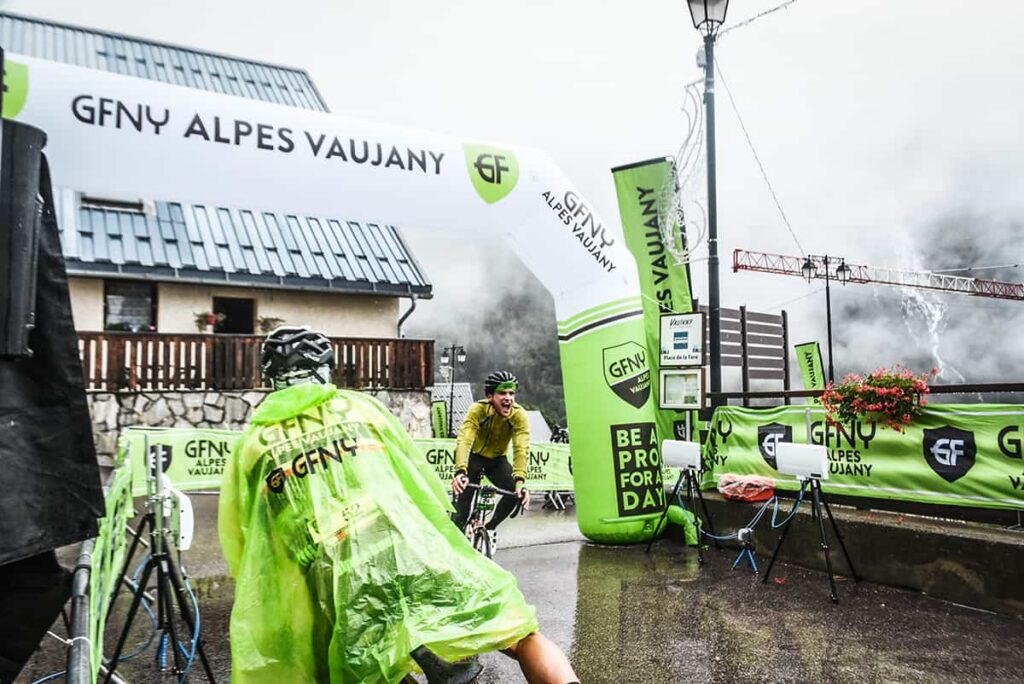
Victoire finale
Le leader de la course arrive en volant avec dans son sillage la voiture klaxonnée du directeur de course. “On peut oublier la victoire finale”, plaisante Sébastien. Après la jonction avec le col du Glandon, nous abordons les 2,5 km finaux jusqu’à la croix de fer du col.
Une fois au sommet, on met des gants, on se gèle et on part. Sur la roue de Sébastien, qui s’avère être une bonne roue pour la descente, je plonge sous la pluie battante. Nous essayons de descendre aussi fort que possible pour gagner du temps, sans prendre de risques irresponsables.
Nous avons fait la descente en toute sécurité. L’organisation a fait un excellent travail en enlevant tout le gravier de la descente les deux jours précédents et à nouveau tôt le matin le jour de la course. Cependant, je suis anxieux lorsque la pluie se transforme en grêle qui me pique le visage. Nous ne devrions pas avoir à faire face à cela à des vitesses allant jusqu’à 70 kilomètres à l’heure ! Heureusement, la grêle a disparu rapidement.
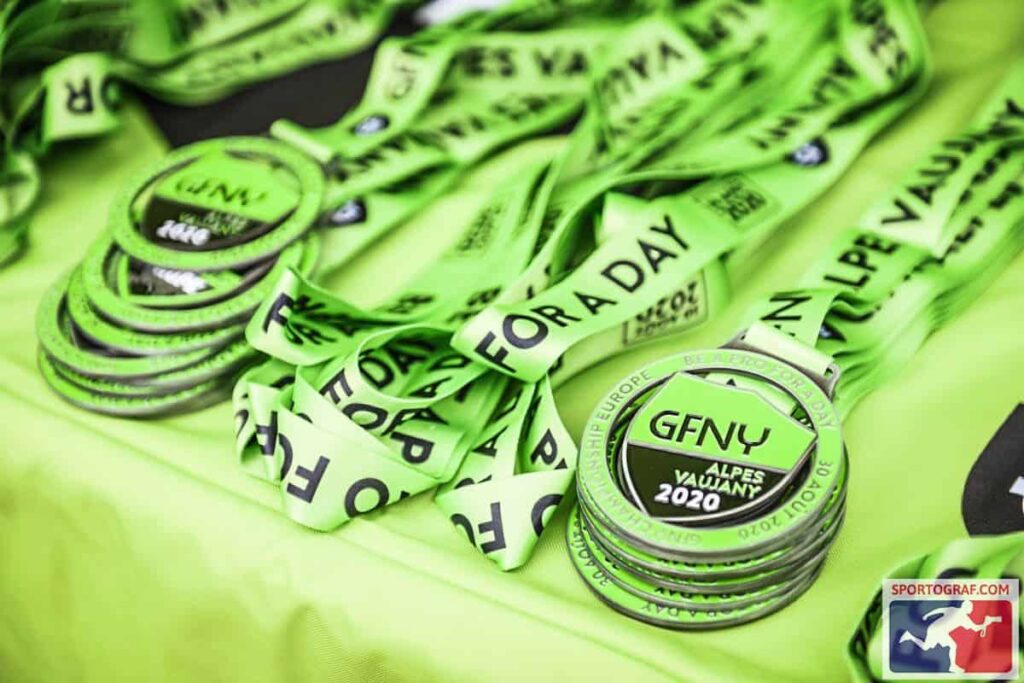
Montée vers Vaujany
Une fois au pied de la dernière montée (4,6 km, 8,6 %), je sais quoi faire : essorer tout ce qui reste en moi. Sébastien me laisse bientôt partir. La montée est raide avec des pics allant jusqu’à 12 %. Je suis fatigué de la douleur car mon rythme cardiaque dépasse de loin le point de basculement. Un panneau le long de la route dit : “Ce n’est qu’une colline. Passez par-dessus !”
Pendant ce temps, la route reste vide devant moi. J’avais espéré rattraper les autres participants, mais à part un coureur garé au bord de la route en désespoir de cause, il n’y a personne à voir. Puis la petite église de Vaujany apparaît, avec au loin la cascade rugissante. J’encourage quelques spectateurs perdus à me soutenir. “Trente-septième place, Bram de Vrind !”, crie l’annonceur alors que je roule sous l’arche. 37e au classement général, pas mal ! Mais surtout, je suis heureux que, malgré les conditions climatiques difficiles et le raccourcissement du parcours, j’ai pu retrouver le sentiment d’être un pro d’un jour.
Un avenir ensoleillé
Conclusion ? Le temps, surtout en montagne, n’est pas entre vos mains en tant qu’organisation. De temps en temps, votre événement peut tomber à l’eau. Malheureusement, ce fut le cas cette année au GFNY Alpes Vaujany. Le choix de raccourcir le parcours pour des raisons de sécurité a été douloureux pour l’organisation et les participants, mais c’était la bonne décision. Le fait que l’organisation ait personnellement enlevé tout le gravier des descentes montre une fois de plus qu’elle a à cœur le parcours et les participants. Le niveau de service était, comme j’en ai l’habitude de la part du GFNY, élevé. Il y a très peu d’événements où vous courez sur des routes fermées et recevez des bouteilles d’eau de l’organisation. Avec un parcours de 120 kilomètres sur la Croix-de-Fer et le Glandon, le GFNY a trouvé un parcours légendaire comme base. En bref : cet événement mérite un avenir radieux.
GFNY Alpes Vaujany: Les montées
Col de la Croix-de-Fer
25 km
+1261m
5% en moyenne
19% max
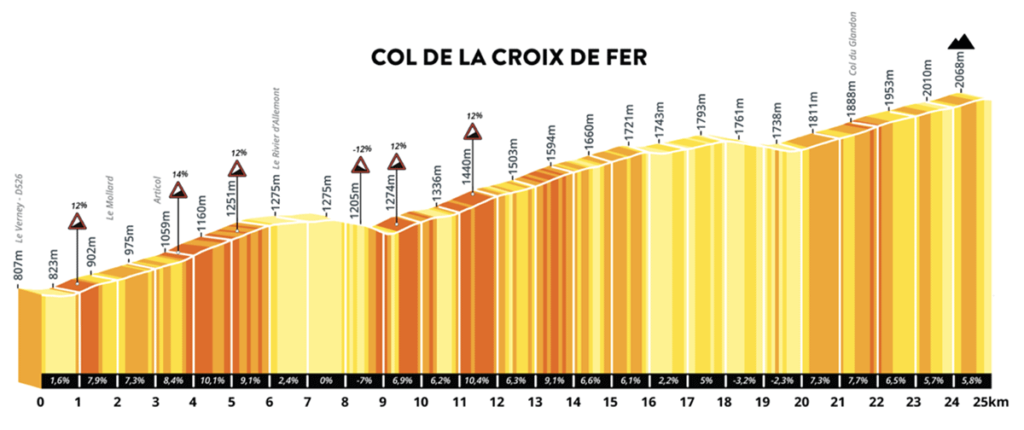
Col du Glandon
20 km
+1430 m
7.2% en moyenne
17% max
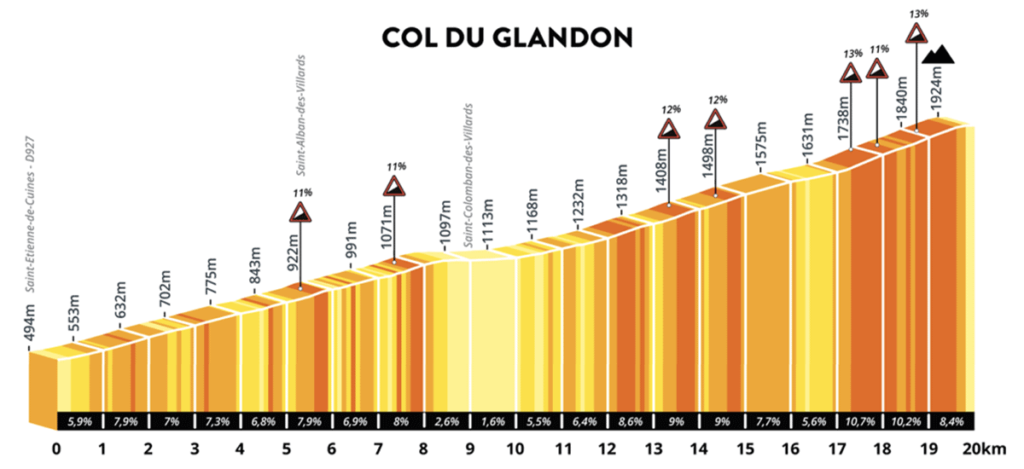
Vaujany
4.6 km
+405m
8.6% en moyenne
15% max
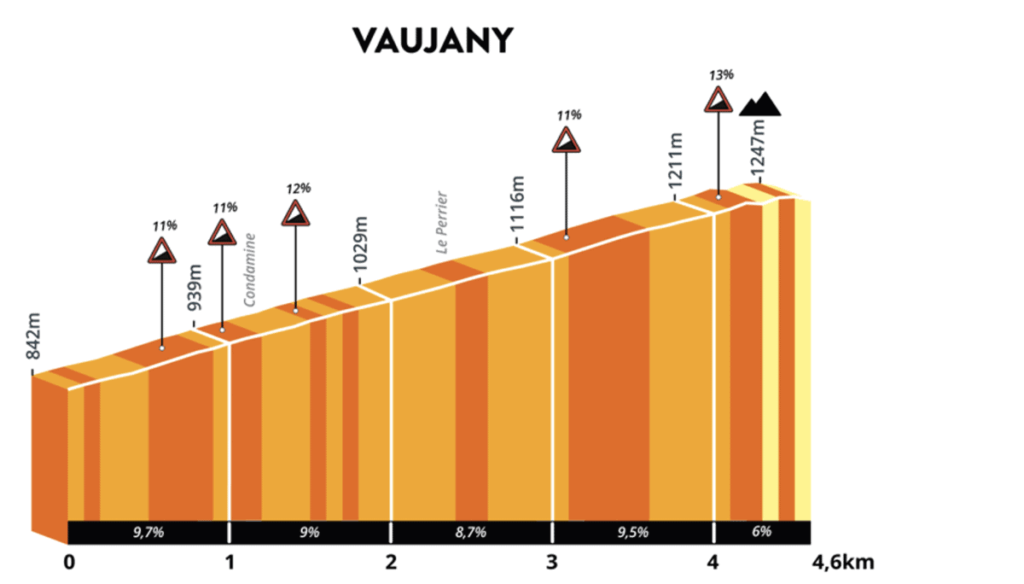
GFNY Alpes Vaujany Parcours + Profil
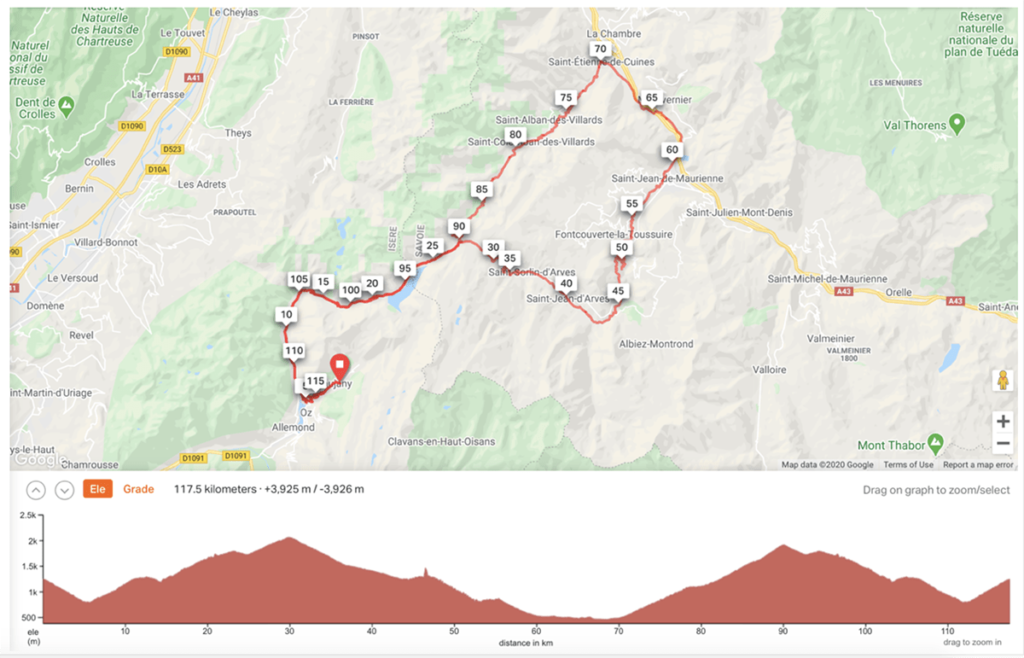


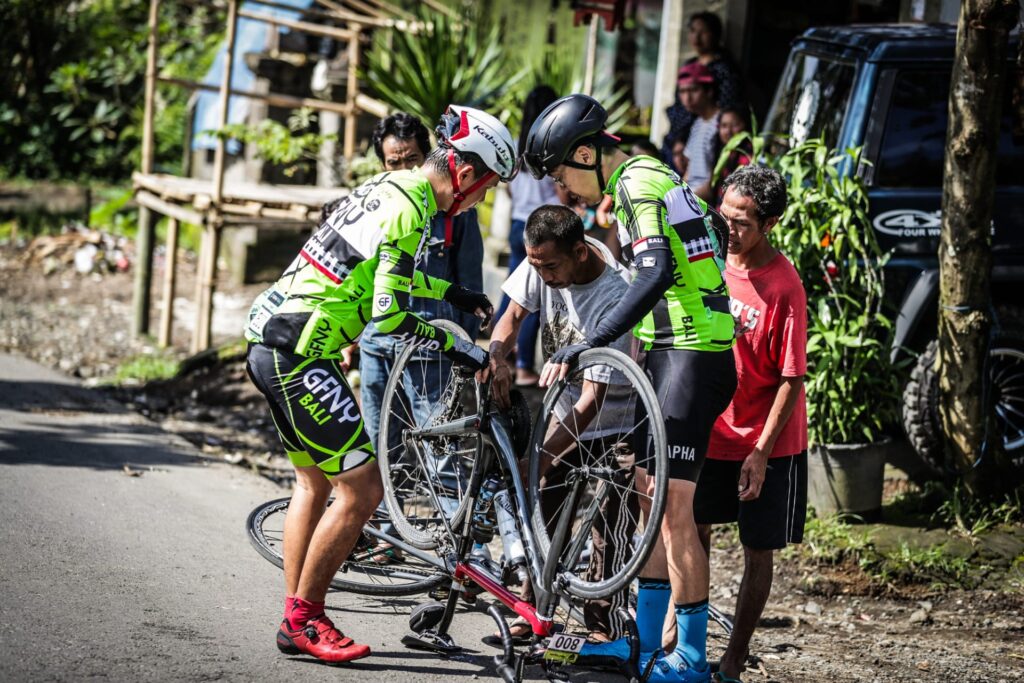
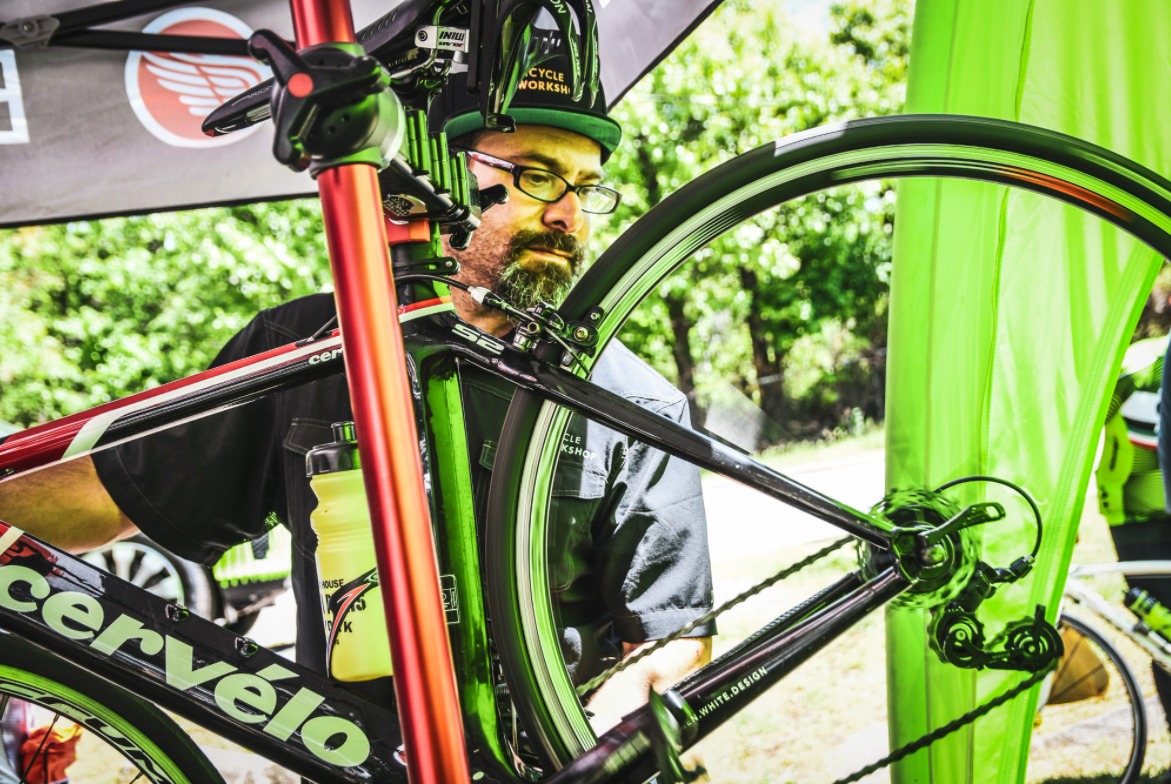
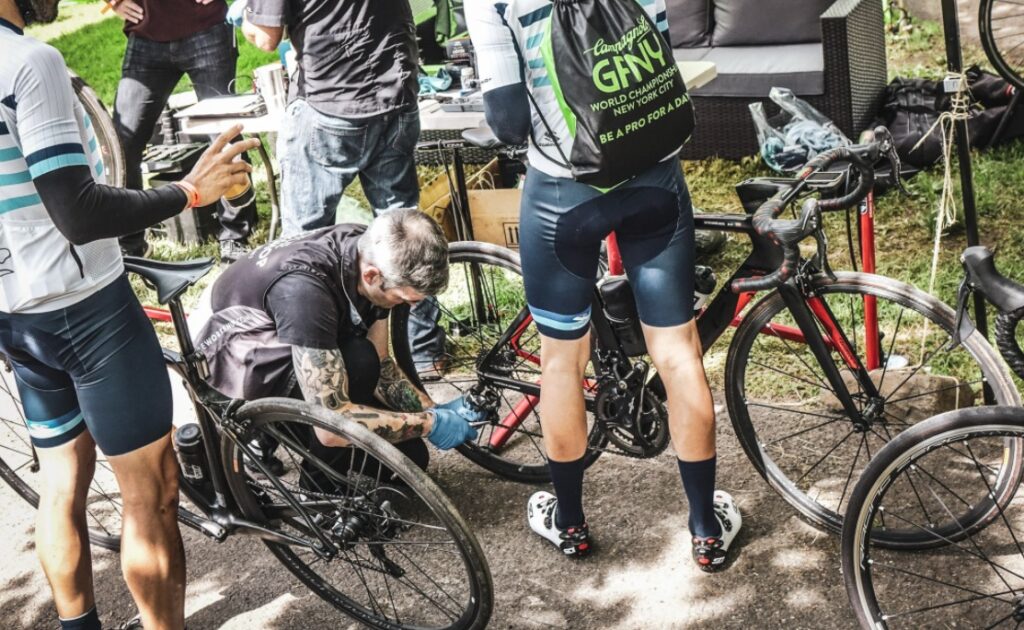

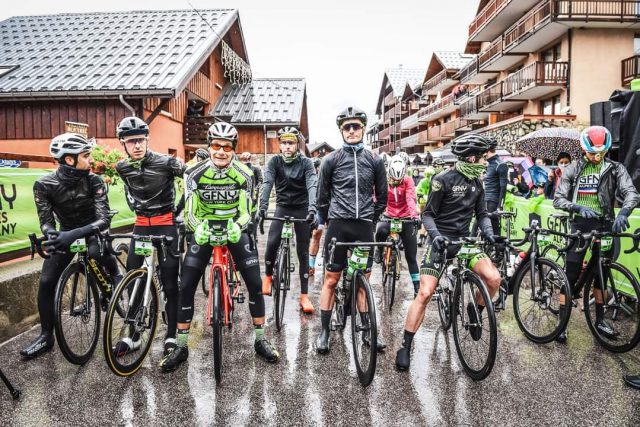 Purtroppo è arrivata la pioggia e il freddo. Le previsioni meteo non hanno lasciato spazio ad errori.
Purtroppo è arrivata la pioggia e il freddo. Le previsioni meteo non hanno lasciato spazio ad errori.
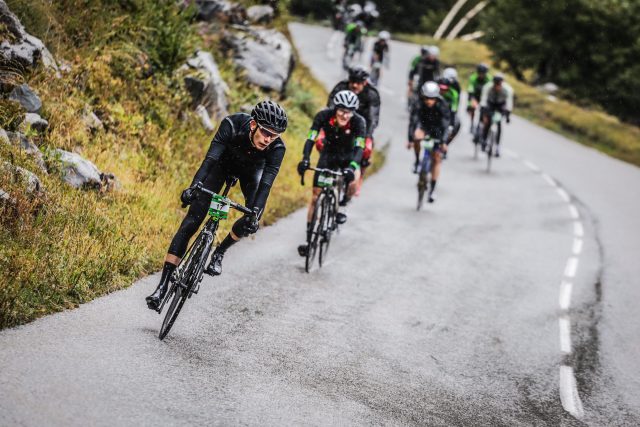 In discesa, freddo e gelo.
In discesa, freddo e gelo.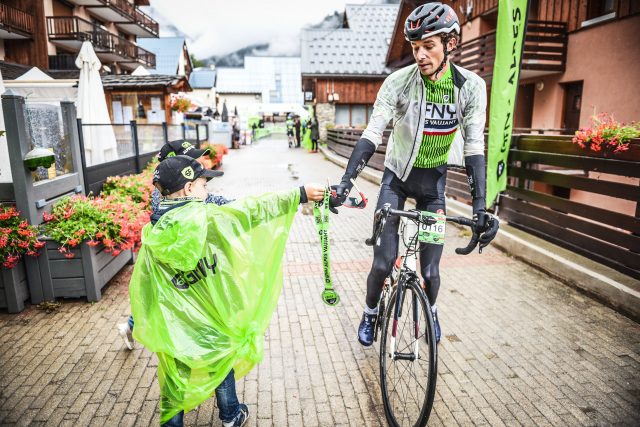 La medaglia di finisher, un bel ricordo. In merito alle disposizioni attuali, senza nessuna cerimonia, le medaglie erano consegnate all’arrivo dai bambini.
La medaglia di finisher, un bel ricordo. In merito alle disposizioni attuali, senza nessuna cerimonia, le medaglie erano consegnate all’arrivo dai bambini.


